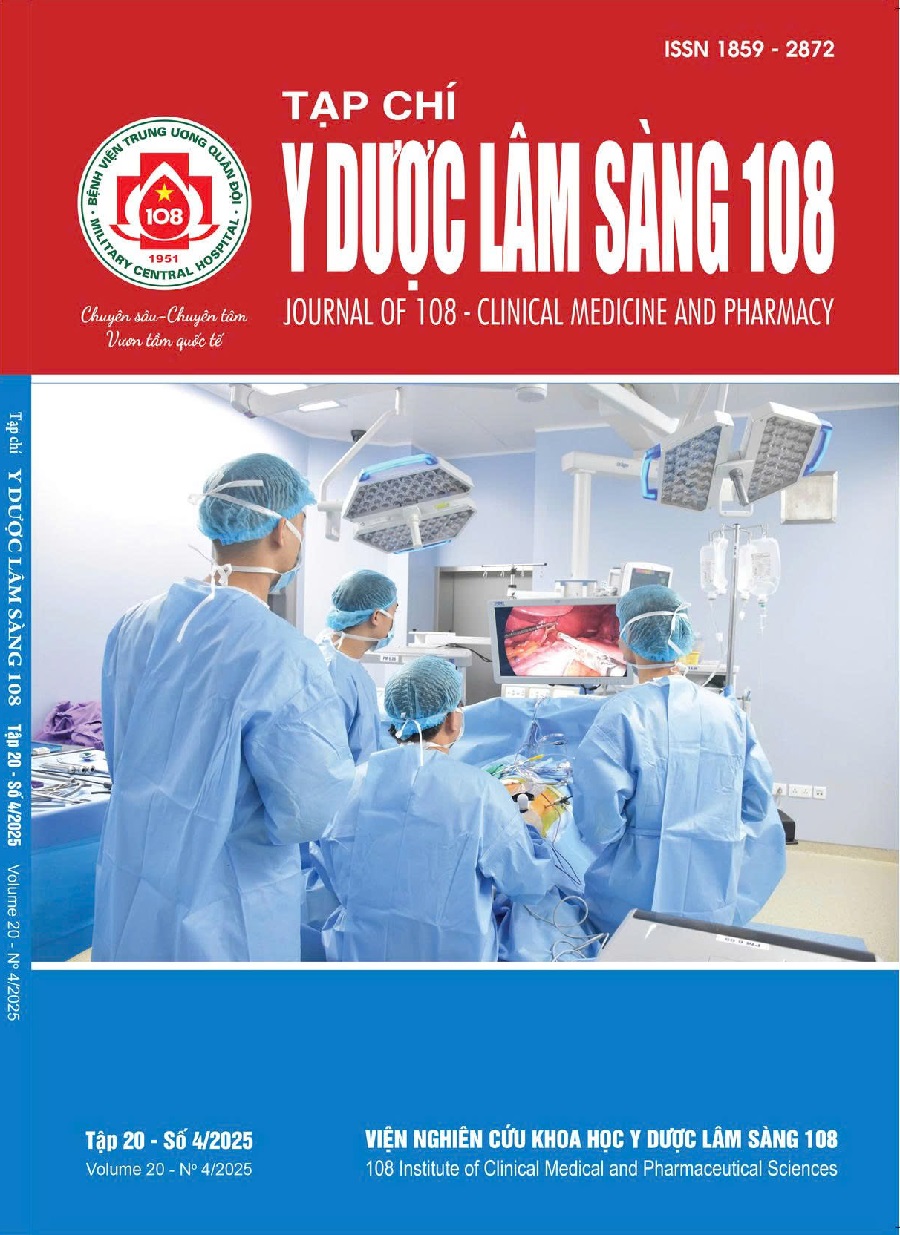Analysis of the consumption and prescribing patterns of antibiotics among hospitalized patients at a district hospital in Phu Tho Province from 2022 to 2023
Main Article Content
Keywords
Abstract
Objective: To analyze the consumption and prescribing patterns of antibiotics among hospitalized patients at a district hospital in Phu Tho Province from 2022 to 2023. Subject and method: Inpatients with retrospective data retrieved from the hospital information system of hospital during the study period (01/01/2022-31/12/2023). Result: The proportion of hospitalized patients prescribed antibiotics over the two years was relatively high, accounting for 57.13% in 2022 and 52.32% in 2023. The average antibiotic consumption in inpatient treatment at Hospital A during the study period was 42.59 DDD/100-bed days. Third-generation cephalosporins were the most frequently prescribed antibiotic class, accounting for 33.54% in 2022 and increasing to 42.56% in 2023. According to the WHO AWaRe classification, the proportion of antibiotics in the Watch category showed an increasing trend over the years, from 54.94% in 2022 to 59.08% in 2023. The Not recommended category was presented at a low proportion (0.30%) throughout the two-year study period. Conclusion: There was a high percentage of inpatients receiving antibiotic prescriptions at Hospital A. During the study period, a large proportion of prescriptions were Watch antibiotics, and the use of this class increased over time. Interventions are urgently needed to ensure the safe and effective use of antibiotics here.
Article Details
References
2. Fu Mengyuan, Gong Zhiwen et al (2023) Inappropriate antibiotic prescribing in primary healthcare facilities in China: A nationwide survey, 2017-2019. 29(5): 602-609.
3. Young Eric H, Panchal Rupesh M et al (2020) National trends in oral antibiotic prescribing in United States physician offices from 2009 to 2016. 40(10): 1012-1021.
4. Gutiérrez-Urbón José María, Gil-Navarro María Victoria et al (2019) Indicators of the hospital use of antimicrobial agents based on consumption. 43(3): 94-100.
5. World Health Organization (2019) Antimicrobial stewardship programmes in health care facilities in low-and middle-income countries: a WHO practical toolkit.
6. World Health Organization (1993) How to investigate drug use in health facilities.
7. World Health Organization (2012) How to Investigate Antimicrobial Use in Hospitals: Selected Indicators.
8. Bộ Y tế (2023) Sổ tay hướng dẫn thực hiện chương trình quản lý sử dụng kháng sinh dành cho bệnh viện tuyến huyện.
9. Kallen Marlot C, Prins Jan MJ (2017) A systematic review of quality indicators for appropriate antibiotic use in hospitalized adult patients. Infectious disease reports 9(1): 6821.
10. Mama Mohammedaman, Mamo Ayele et al (2020), Inappropriate antibiotic use among inpatients attending Madda Walabu University Goba Referral Hospital, Southeast Ethiopia: Implication for future use. 1403-1409.
11. Đỗ Hoàng Miên Em, Huỳnh Thị Mỹ Duyên (2023) Nghiên cứu tình hình kê đơn thuốc kháng sinh, corticoid, vitamin điều trị nội trú tại Trung tâm Y tế huyện Kế Sách-tỉnh Sóc Trăng năm 2022. Tạp chí Y học Việt Nam 531(1B).
12. Nguyễn Thị Song Hà (2022) Phân tích thực trạng sử dụng thuốc kháng sinh trong điều trị nội trú tại Bệnh viện Kiến An, thành phố Hải Phòng năm 2020. Tạp chí Y học Việt Nam, 514(1).
13. Đặng Thị Thuỷ, Phạm Vĩnh Trường và cộng sự (2023) Phân tích sử dụng thuốc kháng sinh điều trị nội trú tại Bệnh viện Trung ương Quân đội 108 trong 6 tháng đầu năm 2023.
14. Phạm Văn Trường, Đỗ Thị Bích Diệp và cộng sự (2021) Thực trạng sử dụng kháng sinh cephalosporin trong điều trị nội trú tại Bệnh viện đa khoa Thuỷ Nguyên, Hải Phòng, năm 2019. 31(5), tr. 32-37.
15. Larramendy Stéphanie, Gaultier Aurélie et al (2021) Local characteristics associated with higher prevalence of ESBL-producing Escherichia coli in community-acquired urinary tract infections: An observational, cross-sectional study. 76(3): 789-795.
16. Nguyen Nam Vinh, Do Nga Thi Thuy et al (2023), Outpatient antibiotic prescribing for acute respiratory infections in Vietnamese primary care settings by the WHO AWaRe (Access, Watch and Reserve) classification: an analysis using routinely collected electronic prescription data. The Lancet Regional Health-Western Pacific 30.
17. Nguyễn Thị Thanh Hương, Trần Thành Trung (2021) Phân tích thuốc kháng sinh sử dụng tại Bệnh viện đa khoa huyện Vĩnh Thuận, tỉnh Kiên Giang năm 2018. Tạp chí Y học Việt Nam, 499(1-2).
18. Vu Quoc Dat (2024) Antibiotic use in public hospitals in Vietnam between 2018 and 2022: A retrospective study. BMJ open 14(8): 087322.
19. Budd Emma, Cramp Emma et al (2019) Adaptation of the WHO Essential Medicines List for national antibiotic stewardship policy in England: Being AWaRe. 74(11): 3384-3389.
 ISSN: 1859 - 2872
ISSN: 1859 - 2872
